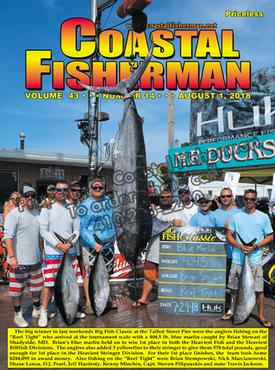


Article by Capt. Steve Katz
 The Throne
The Throne
Spending time on the water fishing or boating is usually a pleasurable experience and a source of recreation for many. No matter what boat you are on, when nature calls and you have to go to the bathroom, the restroom facilities are always an important necessity. The days of being one with nature are no longer allowed in most jurisdictions, not to mention the aggressive enforcement of legal requirements could result in unexpected financial penalties.
While we may refer to the toilet on a boat as a “head”, the regulatory agencies refer to it as a Marine Sanitation Device or MSD. A MSD is "any equipment for installation on board a vessel which is designed to receive, retain, treat or discharge sewage, and any process to treat such sewage." If you think this terminology and its regulations are complex, you are correct Much more complex than a household toilet system, marine toilet’s need to operate in various geographical jurisdictions and also meet the requirements of the boat builder or owner.
The simplest toilet system is not even a MSD, it the portable toilet or “porta-potty”. Portable toilets that use no installed water, power, etc., are not considered installed toilets and therefore not subject to most requirements. But where you empty the portable toilet is subject to many regulations. These portable toilets are often found on smaller, run-about boats designed for families. For most boats, these have limited use and are often emergency use only since no one ever wants to empty and clean the potty. They also have an extremely limited capacity.
Once the toilet system becomes permanently installed or operated with electrical power, you become eligible for regulation by many government agencies.
No discharge zone
A “no discharge zone” or NDZ is an area in which both treated and untreated sewage discharges from vessels are prohibited. Within NDZ boundaries, vessel operators are required to retain their sewage on board for discharge at sea (beyond three miles from shore) or onshore at a pump-out facility.
Additionally, while operating a vessel in an EPA designated no discharge zone; flow-through devices are only permitted if adequately secured to prevent discharges of all treated and untreated sewage.
For example, closing the seacock and padlocking, using a non-releasable wire tie or removing the seacock handle is considered to be sufficient in most cases. For short voyages, locking the door to the head with a padlock or a door handle key lock is another acceptable method. For vessels that routinely operate in no discharge zones, a Type III MSD is recommended.
Maryland currently has two NDZ’s: Herring Bay in Anne Arundel County and the Northern Coastal Bays in Worcester County – which covers most of Ocean City. The Maryland Department of Natural Resources indicates that “violators will be subject to fines up to $1,000” for non-compliance in these zones.
Marine Sanitation Devices (MSDs) are available in a few different categories. The Coast Guard categorizes MSDs into three types: Type I, Type II, and Type III.
Type I is an on-board treatment device using a physical/chemical based system that relies on maceration and chlorination. After treatment, the waste can be discharged. The Raritan Electro Scan is one of the more popular Type I MSDs in the marketplace.
Type II is also an on-board treatment device that uses biological or aerobic digestion based system. After treatment, the waste can be discharged. Type II systems are more often seen on large commercial vessels than on recreational boats.
Type III is a holding tank or similar device that prevents the overboard discharge of treated or untreated sewage. This is the most common system for recreational boats.
Now that you know more than you wanted to know about MSD’s, what can you do to keep the one you have working at its best. The easiest thing is to follow the manufacturer’s instructions. Not all systems are the same and some of the household toilet cleaners and chemicals are not compatible with the materials used in the MSD or the holding tank.
Believe it or not, your holding tank needs good bacteria (Aerobic) and air to function properly. Avoid the use of detergent, bleach, dish soap or other cleaners or odor-masking agents in the holding tank. If using a head chemical, use one that is formaldehyde and bromine free to allow aerobic bacteria to live and work properly in the tank.
There are a few type of holding tank treatments; chemical, enzyme, nitrate and bioactiv. Chemical treatments are the most popular because they often provide the best odor control. Enzyme treatments accelerate the digestion of organic materials in waste and neutralize odors at the same time. Nitrate treatments provide nutrients for the bacteria in place of oxygen and the result is production of nitrogen (odorless) gas in place of the hydrogen sulfide generated when bacteria are in a low oxygen environment. Bio-active treatments contain live aerobic bacteria which break down waste, reproduce and crowd out anaerobic (odor-producing) bacteria.
As they say, no job is complete until the paperwork is done! With all types of MSD’s it is recommended that biodegradable RV/Marine toilet paper (single ply, thinner and not as soft as household toilet paper) be used so that it will break down with the waste and not clog up the system.. Regular household double and triple-ply toilet paper can cause blockages and clog up your plumbing by blocking the valves in the toilet or the discharge hoses.
Captain Steve Katz is the owner of Steve’s Marine Service and holds NMEA, AMEI and NMEA2000 certificates along with ABYC Master Technician certification and factory training from many manufacturers. To reach Steve, call (631) 264-1600.